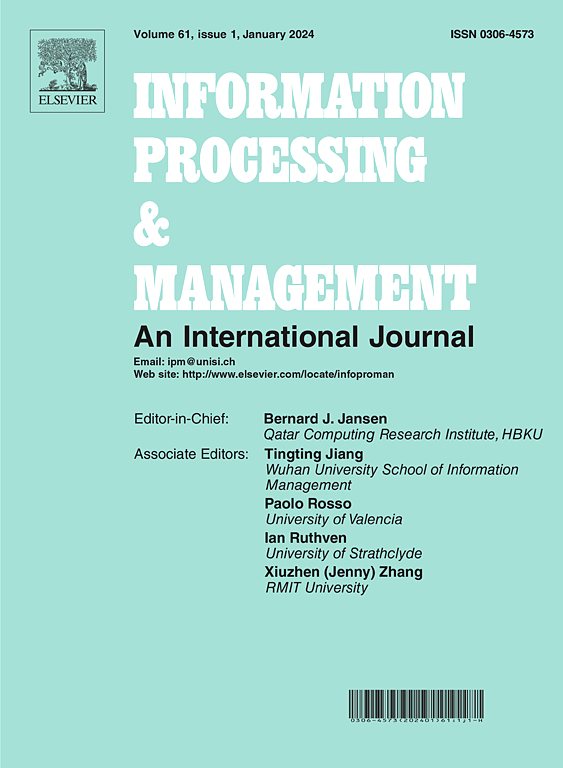联合多模态实体关系抽取的上下文驱动隐式三重推理
IF 6.9
1区 管理学
Q1 COMPUTER SCIENCE, INFORMATION SYSTEMS
引用次数: 0
摘要
联合多模态实体关系提取(JMERE)是多模态命名实体识别(MNER)和多模态关系提取(MRE)的联合模型,旨在从多模态输入中提取有价值的结构化信息。然而,现有的JMERE方法难以充分利用任务之间的双向语义交互。为此,本文提出了以实体类型和关系类型组成的类型三元组为基础的上下文驱动隐式三元推理框架(CITR)。具体而言,CITR首先使用大型多模态模型(lmm)生成的上下文作为语义引导线索来增强模态表示,并通过约束模块防止过度的语义偏差。随后,CITR对不同类型三元组的复杂依赖关系进行建模,以迭代地改进与隐式三元组相关的表示。最后,本文将JMERE任务重新表述为一类三中心序列标注问题,并设计了一种双序列联合标注方案,与以前的方案相比,该方案降低了计算复杂度和标记稀疏性。实验结果表明,该方法在JMERE (Joint)任务上的F1得分为58.02%,显著优于现有方法0.99%。与使用lmm的方法相比,使用llva -1.5的CITR获得了58.49%的F1得分。本文章由计算机程序翻译,如有差异,请以英文原文为准。
CITR: Context-driven implicit triple reasoning for joint multimodal entity-relation extraction
Joint Multimodal Entity-Relation Extraction (JMERE) jointly models Multimodal Named Entity Recognition (MNER) and Multimodal Relation Extraction (MRE), aiming to extract valuable structured information from multimodal input. However, existing JMERE methods struggle to fully leverage bidirectional semantic interactions between tasks. To this end, this paper proposes a context-driven implicit triple reasoning framework (CITR), which takes type triples composed of entity and relation types as the foundation. Specifically, CITR first uses context generated by large multimodal models (LMMs) as semantic guidance cues to enhance modality representations, and prevent excessive semantic bias through a constraint module. Subsequently, CITR models the complex dependencies of different type triples to iteratively refine the representations associated with implicit triples. Finally, this paper reformulates the JMERE task as a type triple-centric sequence labeling problem and designs a dual-sequence joint tagging scheme, which reduces the computational complexity and label sparsity compared to previous schemes. Experimental results show that CITR achieves F1 score of 58.02% on the JMERE (Joint) task, significantly outperforming the state-of-the-art methods by 0.99%. Compared to methods with LMMs, CITR using LLaVA-1.5 achieves a superior F1 score of 58.49%.
求助全文
通过发布文献求助,成功后即可免费获取论文全文。
去求助
来源期刊

Information Processing & Management
工程技术-计算机:信息系统
CiteScore
17.00
自引率
11.60%
发文量
276
审稿时长
39 days
期刊介绍:
Information Processing and Management is dedicated to publishing cutting-edge original research at the convergence of computing and information science. Our scope encompasses theory, methods, and applications across various domains, including advertising, business, health, information science, information technology marketing, and social computing.
We aim to cater to the interests of both primary researchers and practitioners by offering an effective platform for the timely dissemination of advanced and topical issues in this interdisciplinary field. The journal places particular emphasis on original research articles, research survey articles, research method articles, and articles addressing critical applications of research. Join us in advancing knowledge and innovation at the intersection of computing and information science.
 求助内容:
求助内容: 应助结果提醒方式:
应助结果提醒方式:


